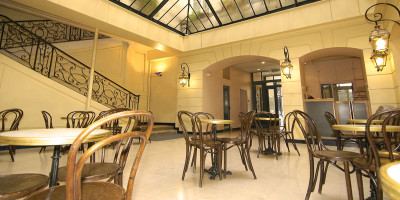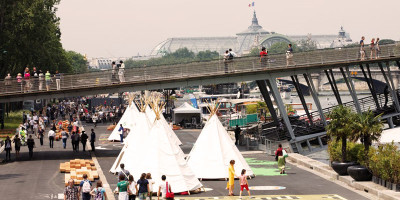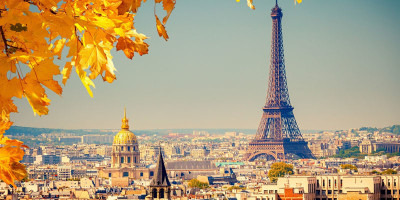
Devil’s Bath, Wai-O-Tapu New Zealand. Photo By Takver – Wikimedia Commons
Top 10 Astonishing Facts about Devil’s Bath, New Zealand
The Devil’s Bath is found in Wai-o-Tapu Scenic Reserve, New Zealand. Wai-o-Tapu is a Maori word that means scared waters. The tourist operation occupies part of the reserve under concession with the name Wai-o-Tapu Thermal Wonderland.
Wai-o-Tapu Scenic Reserve is found in the Taupo Volcanic Zone, an active volcanic area for over 2,000 centuries. Since geothermal sites are fragile components of geoheritage, conservation measures are required to ensure their sustainability. A Wai-o-Tapu Reserve Management Plan is currently being developed by the Runanga (Maori tribal council).
The naturally occurring pool gets its neon green water colour from hydrogen sulfide gases and ferrous salts. Other volcanic elements create colour variations of blue and red on the land surface of Wai-o-Tapu.
Tourists can visit the Devil’s Bath and other mud pools in Thermal Wonderland on any day. It is open to the public all year round.
1. Wai-o-Tapu Scenic Reserve Is Believed to Have Once Been A Collapsed Volcanic Crater
Wai-o-Tapu Scenic Reserve is approximately 125 hectares. It has many hot springs, rich geysers such as Lady Knox, colourful lakes such as Devil’s Bath and Champagne Pool, and boiling mud pools such as Waiotapu. Out of the 125 ha, only 18km2 of this is accessible to the public.
The reserve is leased from the Runanga by Wai-o-Tapu Thermal Wonderland. It has been a scenic reserve since 1931. It is believed that over 2,000 centuries ago Wai-O-Tapu was part of an active geothermal park at a volcanic crater within the Taupo Volcanic Zone.
2. The Volcanic Area of The Devil’s Bath Has Been Active For Over 2 Million Years

Taupo Volcanic Zone North Island Photo By BayofPlentyA2002296 – Wikimedia Commons
Taupo Volcanic Zone (TVZ) is part of the larger Central Volcanic Region. Mount Ngaruruhoe and Mount Ruapehu are the most frequently erupting mountains in TVZ. TVZ stretches from Taupo all through to the White Island (Whakaari).
The 1886 volcanic eruption of Mount Tarawear killed over 100 people. An eruption from this active field emptied a whole Lake Taupo and turned the sky in Rome and China red!
Devil’s Bath maintains its character of neon green water because of the level of volcanic gases in the active TVZ.
3. Its Unique Character Makes It The Most-Eye Catching Pool in Thermal Wonderland
Wai-o-Tapu Thermal wonderland has an area of about 28km2 and is the most captivating attraction of the Scenic Reserve. The Devil’s Bath is the most eye-catching pool in the Thermal Wonderland.
Tickets to the geothermal park are bought within the center. There are picnic areas and a dedicated area for cyclists. It requires comfortable shoes as it is an active geothermal area with uneven terrain.
4. The Devil’s Bath Has A Distinctive Pungent Smell
As you approach the iconic slime-looking pool of water, you are welcomed by a pungent smell. This is what you’d expect from such a sight. The smell of half sewer half rotten eggs emanates from the water composition of the bath.
The high levels of hydrogen sulfide, which is a volcanic gas, are toxic and therefore there are no existing water animals within the bath.
5. The Neon Green Colour of The Devil’s Bath is Dependent on Sunlight And Mineral Deposits

Devil’s Bath, Wai-O-Tapu New Zealand. Photo By Takver – Wikimedia Commons
The yellow-green coloration of the Devil’s Pool is due to deposits of sulfur that float on the surface of the water body. These deposits were collected within the crater and mixed up with the minerals in the soil.
This neon green colour is however not constant. It varies depending on the sunlight and the number of minerals that are present in the water.
When the pool has a lot of iron deposits, it gets an intense green colour. When the is more sulfur, the water becomes bright yellow.
6. The Devil’s Bath Can Melt The Human Skin Off
The Devil’s bath is not your normal naturally occurring pool. The neon green colour of the water might make one assume that the water has benefits for the skin. Swimming in the water would irritate one’s skin to a point of melting it off!
The deposits of sulfur and iron make the water highly acidic. Tourists are advised not to frequently expose themselves over prolonged time periods to the Volcanic Zones as these gases may affect their respiratory health.
7. It Was First Formed From A Massive Earth Depression
The Devil’s Bath sits on an uneven depression on the Earth’s surface. The hallowed ground was assumed to have been formed as a result of a massive eruption from the Earth. The long stretch of wooden platform gives plenty of viewing room for this sunken pool.
8. The Origin of the Name Devil’s Bath is Unknown
The Maori have many mythical stories of how physical features such as the Fox Glaciers, Te Waikoropupu Springs, and Moturiaki island were formed. The Devil’s Bath is however an exception to such.
No historical or culturally significant stories are related to the Devil’s Bath. The source of its name is also unknown but by first sight and smell, one can understand why it would be named Devil’s bath anyway.
9. There Are Two Devil’s Baths in The World

Devil’s Bath Sinkhole. Photo By Kiwibirdman – Wikimedia Commons
Unlike the Devil’s Bath in New Zealand, the Canadian Devil’s Bath is a sinkhole that was a result of collapsing limestone bedrock. The 44-metre Canadian bath gets its water from underground passages of the Benson River.
The two might have similar names but they are both different. The water of the Canadian cenote is crystal clear to the point of seeing the rocky floor. The Devil’s Bath Brewing in Vancouver Island was named after the cenote.
10. Lake Ngakoro In Wai-O-Takapu Has Similar Characteristics To Devil’s Bath

Waiotapu Thermal Wonderland: Lake Ngakoro. Photo By W. Bulach – Wikimedia Commons
Lake Ngakoro is found in the far end of Wai-o-Takapu Reserve. It is fed by a narrow stream from the southern part of Waiotapu thermal wetlands. The lake was formed as a result of sinter deposition and alteration.
Lake Ngakoro is larger in size than the Devil’s Bath. It is originally a hydrothermal lake but it contains geothermal fluids just like the Devil’s Bath. Water in Lake Ngakoro is bright green in colour indicating the presence of similar volcanic contents as the Devil’s Bath.

 English
English











